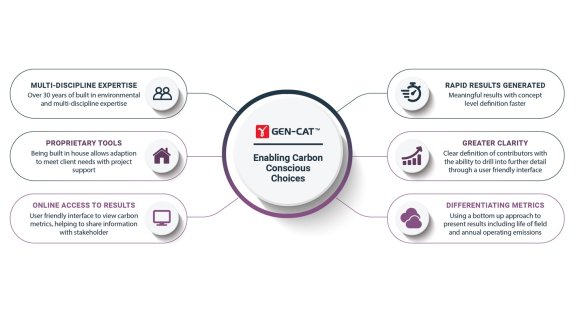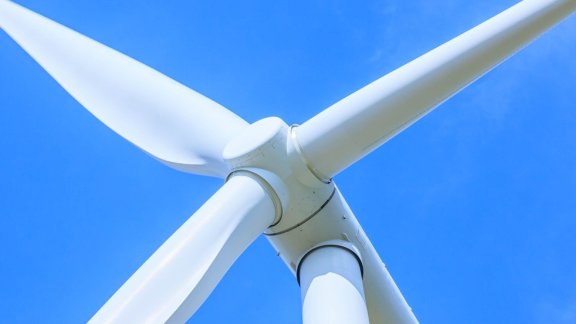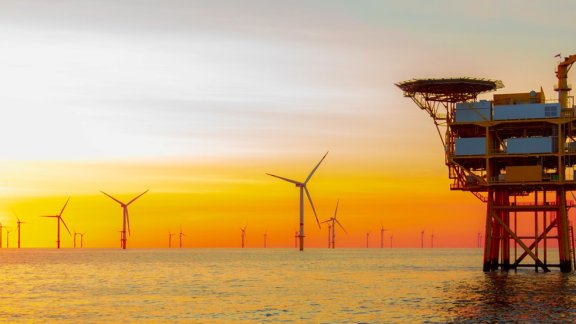OVERVIEW
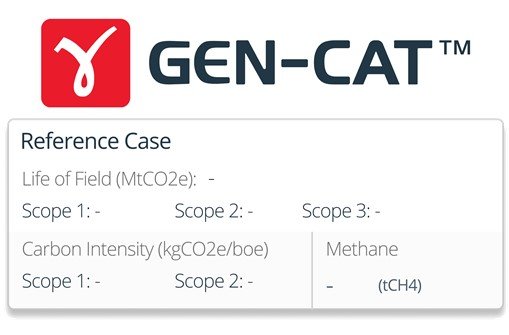
Operational facility greenfield-brownfield expansion delivering future technical and economic value to the client, government, and stakeholders while significantly reducing CO2 footprint.
Customer: Confidential
Location: South East Asia
CHALLENGE
Carbon dioxide and other greenhouse gases (GHGs) in the atmosphere have reached their highest level in human history and continue to increase despite the current economic downturn. It is widely accepted that to combat the climate change crisis these emissions must be reduced dramatically. Research suggests that oil and gas industry operations directly account for almost 10% of GHG emissions produced by humans as well as providing the fuel that leads to downstream emissions, so it is clear that real progress isn’t possible without the buy-in of the industry.
Our client recognised the importance of contributing to this change early, becoming one of the first majors to state their aim to become a net-zero company by 2050 or before. To meet this pledge the company needs to remove circa half a billion tonnes of carbon emissions a year from its current operations which, in the immediate future, means the transformation of existing operations to minimise Scope 1 (direct operational) emissions.
Therefore, when our client initiated a greenfield-brownfield expansion of their existing offshore and onshore assets in South East Asia, carbon minimisation was at the forefront of the project objectives. This was a requirement Genesis was poised and eager to meet using our proprietary emissions assessment tool Gen-CATTM. The project scope was challenging as it comprised assessment of multiple development concepts encompassing onshore and offshore elements plus brownfield modifications to multiple existing facilities, as well as new greenfield elements. Overall, emissions estimates needed to be generated to a suitable degree of accuracy to capture all these elements and appropriately differentiate between concepts and needed to be conducted within the rapid timescale of an early phase conceptual project.
UNDERSTANDING
To successfully undertake the project it was essential that emissions forecasting, including GHG emissions intensity and methane emissions, was conducted alongside technical and economic assessment as a key driver in the concept screening decision criteria. We used our proprietary tool, Gen-CATTM to fully support and facilitate this process.
In order to estimate the emissions footprint for each concept under consideration, the first operational emissions associated with each new unmanned offshore facility had to be quantified. This included power generation and export (during both operational and maintenance mode), offshore fugitive emissions, offshore facility venting, and emissions from walk-to-work vessels used during maintenance campaigns.
Understanding the impact of the new onshore facilities on existing facility emissions was a key step in providing a holistic emissions overview for multiple concepts. This required capture of the varying opportunities that arose through exporting steam and power surpluses to the aging existing facility, reducing the load on less efficient forms of power generation, therefore, improving on the current operation.
Finally, significant variations in production throughput over the design life meant year-on-year emissions forecasts were required to accurately predict total emissions for each concept. These were generated taking due consideration of parallel operating equipment, equipment sparing, the potential for turndown, and impact on facility availability to truly reflect option variations over the remaining field life.
SOLUTION
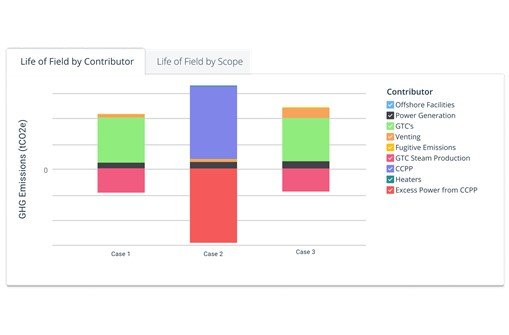
Throughout this study, the transparent, robust and flexible operation of Gen-CATTM provided the speed and accuracy of estimation required to support decision making.
The use of Gen-CATTM allowed rapid GHG emissions estimation for each of the proposed configurations.
The ability to input site-specific existing emissions factors in Gen-CATTM enabled steam and power surpluses generated by incorporating waste heat recovery with Gas Turbine Compressors (GTCs) and a new Combined Cycle Power Plant (CCPP) to be translated into relative emissions saving for the facility as a whole.

Integrating production profiles and standalone mechanical modelling enabled Gen-CATTM to be refined to account for changes in power load over time. This allowed subtle variations between cases through the full life of the field to be determined including:
- Parallel unit operation and its impact on facility availability and impact on flaring and venting volumes;
- Impact on emissions due to equipment operating in recycling until throughput allowed for parallel trains to be shut down;
- Emissions forecast provided transparency on throughput versus operating points to help identify future optimisation steps, e.g. compressor re-wheeling.
Finally, the ability to tune Gen-CAT to client in-house emissions standards ensured the basis of the emissions used for all of the work carried out remained consistent and comparable with existing client portfolio assessments, thereby allowing the emissions results from the project to be incorporated directly into the company targets.
RESULTS
The output of the Gen-CATTM assessment enabled complete, holistic concept screening and selection to be undertaken, with a full understanding of the carbon implications and impact of each concept under consideration. A preferred concept was ultimately identified for each element of the study to take forward for further design and assessment.
This project demonstrated the strength and flexibility of Gen-CATTM to the client, giving them enhanced understanding beyond high-level lifecycle contributors by showing a detailed breakdown of potential emissions savings and optimising operational variations. This clarity allowed strategic development solutions to be generated that fit the client's aspirational carbon reduction requirements as well as operational and budgetary needs.
Banks and investors are increasingly looking to align their investments with the Paris Agreement, demanding greater transparency from energy companies on just how they are preparing for the low-carbon transition. Using Gen-CATTM brings CO2e assessments forward into the concept screening stage as a decision driver, not simply an output, and models are sufficiently detailed and flexible such that they can be refined and adapted as projects mature into design optimisation, FEED, and beyond.
Aiming for net-zero is not only the right thing for our clients, it is the right thing for society and our future. Consequently, making tangible carbon reduction decisions and documenting this over the project life cycle is set to become as important a project factor as cost and safety, and to neglect this aspect would therefore present a significant project oversight and risk.
Get in touch
If you require more information, please contact your local Genesis representative.

